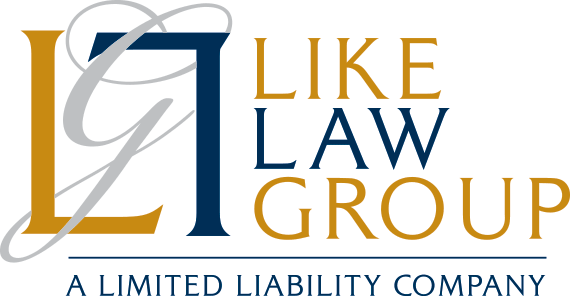It is the best of (economic) times and the worst of (economic) times for young adults in America today. This demographic has come of age during an unsteady economy and tends to reject traditional thinking about money and financial planning.
How can advisors reach a generation of Americans who prioritize things like “soft saving,” “work-life balance,” and “sustainable investing?” They are open to your advice—you just need to know how to speak their financial language.
How Young People Today View Money and Finances
Members of Generation Z, born between 1997 and 2010, have a complicated relationship with finances that challenges the long-standing goals of working hard, saving money, and retiring early.
The oldest Gen Zers turn 27 this year, while young adult zoomers are preparing to go to college or enter the workforce. Among those who are already working, their money is not going as far due to inflation hitting them harder than all other age groups.1
According to a study conducted by Intuit, two out of three Gen Z adults say they are only interested in finances as a way to support their other interests. 2The same percentage say they do not know if they will ever have enough money to retire, and three in four say the current economy makes them hesitant to set long-term goals. 3
Financial Planning Strategies for Gen Z
These are some of the key investing and financial planning trends seen with Generation Z:
- Starting financial planning younger. Seventy-three percent of Gen Zers “got serious” about financial planning before age 25, more than any other age cohort.4
- Investing sooner. Although Gen Z is investing less overall, they began saving and investing on average at age 19—nearly half the age of when baby boomers started investing.5
- Exploring opportunities outside traditional markets. Younger investors are less confident that they can achieve above-average returns solely with stocks and bonds. Instead, they show a greater preference for alternative investments such as crypto, private equity, and direct investments in companies.6
- Taking action on their investments. A Bankrate survey found that members of Gen Z are the most active investors: 87 percent of 18- to 26-year-olds bought, sold, or withheld additional investment last year.7
- Getting advice online. Around 75 percent of Gen Z adults have relied on financial advice from social media or the internet. 8
What does all this mean for advisors working on a financial plan for young adults? Here are some ideas:
- Credit cards. Gen Z is leading the way in maxing out their credit cards, indicating tight cash-flow and the need for better budgeting, such as a 60 (needs) / 20 (wants) / 20 (savings) formula. Keep in mind that most Gen Z would rather spend than save.9
- Passive investing. A long-term investment strategy that relies on buying, holding, and compounding interest is one of the best hedges against inflation.Let young adults know that passive investing almost always beats active investing,even among professional fund managers.
- Essential savings. Gen Z is spending more on essentials like vehicle insurance, housing, and food, in part because of rising costs. They could benefit from advice about how to shop economically for what they need and make their dollars go further.
- Paychecks. Automatic savings plans can ensure that more money is left over for essentials like rent and splurges like travel, helping them achieve the work-life balance this generation covets.
- Estate plan. Gen Z may wish to prioritize charities in their estate plan that align with their values.
Gen Z is set to inherit $11 trillion through 2045 as part of the Great Wealth Transfer.10 Instilling good money habits in them now can help them meet their long-term financial goals and prepare them for a potential inheritance windfall, which most say they ideally plan to use to invest and pay off debt.11
Wealth management and estate planning are two sides of the same coin. When counseling young clients on how to meet their money goals, look for chances to explain the related need to create an estate plan to protect the investments they work hard to grow.
- Paul Davidson, Inflation Is Squeezing Gen Z More Than Other Groups. Why Are They Bearing the Brunt of It?, USA Today (June 3, 2024), https://www.usatoday.com/story/money/2024/06/03/inflation-hit-gen-z-hardest/73901354007. ↩︎
- Intuit, Prosperity Index Study (Jan. 2023), https://www.intuit.com/blog/wp-content/uploads/2023/01/Intuit-Prosperity-Index-Report_US_Jan-2023.pdf. ↩︎
- Id. ↩︎
- Gen Z Beginning Financial Planning Earlier Than Previous Generations, Corebridge Fin. (Apr. 4, 2024), https://investors.corebridgefinancial.com/news/news-details/2024/Gen-Z-Beginning-Financial-Planning-Earlier-Than-Previous-Generations/default.aspx. ↩︎
- Charles Schwab, Modern Wealth Survey 2024, at 6, https://content.schwab.com/web/retail/public/about-schwab/schwab_modern_wealth_survey_2024_findings.pdf. ↩︎
- Will the “Great Wealth Transfer” Transform the Markets?, Merrill, https://www.ml.com/articles/great-wealth-transfer-impact.html (last visited Aug. 27, 2024). ↩︎
- James Royal, 9 in 10 Gen Z Investors Were Active Due to Inflation or Interest Rates: Why That’s Bad News–and Good, Bankrate (Aug. 21, 2023), https://www.bankrate.com/investing/gen-z-investors-active-bad-and-good-news. ↩︎
- John Egan, Nearly 80% of Young Adults Get Financial Advice from This Surprising Place, Forbes (Mar. 4, 2023), https://www.forbes.com/advisor/financial-advisor/adults-financial-advice-social-media. ↩︎
- Serah Louis, Roughly 60% of Millennials, Gen Z Would Rather Spend Money on “Life Experiences” Like Traveling, Concerts Now Than Save for Retirement—Are They Making a Big Mistake?, Yahoo!Finance (Dec. 1, 2023), https://finance.yahoo.com/news/roughly-60-millennials-gen-z-110000580.html. ↩︎
- Will the “Great Wealth Transfer” Transform the Markets?, supra note 11. ↩︎
- Julie Sherrier et al., Study: Gen Z and Millennials Plan to Use Inheritances to Invest, Pay Off Debt, USA Today (June 6, 2024), https://www.usatoday.com/money/blueprint/credit-cards/study-great-wealth-transfer-plans. ↩︎


